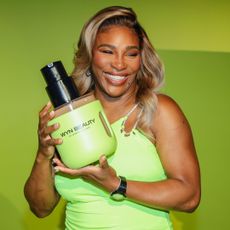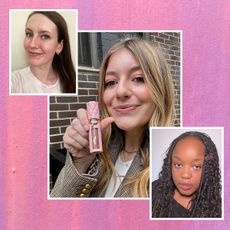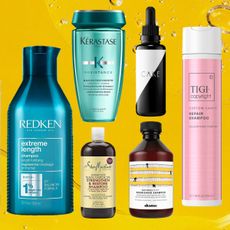
For years, dermatologists have drilled it into our heads to nix the tanning beds, get regular skin checkups, and (the mother of all skincare tips) load up on sunscreen. And — hallelujah! — it worked. Now there's a generation of savvy 20- and 30-something women who aren't about to let their faces wrinkle, mottle, or sag before they take action. In fact, a study by dermatologists Dr. Kathy Fields and Dr. Katie Rodan found that 84 percent of 25- to 29-year-olds are afraid of the effects of aging on their skin. Hence the recent rush to skincare counters and, in some cases, cosmetic docs — 2009 saw under-35 Botox users rise to 15 percent. But the best strategy for age prevention in young skin isn't always the most potent. As dermatologist Dr. Dennis Gross explains, "Keep in mind that it's best to begin with the least aggressive products and procedures."
So when should you realistically start? "At 20," says Fields. "Prevention is so much easier than reversal. But even if you cooked yourself in the sun from age 5 to 35" — or subsisted on ciggies and Dunkin Donuts in college — "your skin can still bounce back, at least some of the way." Which means (broken record alert!) daily sunscreen, along with an age-appropriate cocktail of antioxidants and vitamins, is nonnegotiable. Here, the best strategies for tackling early aging so your skin can go the distance.
PROBLEM: TIRED EYES
"The first signs of aging often show up around the eyes," says plastic surgeon Dr. Gregory Bays Brown. "By the time you reach 30, the lower lid no longer blends seamlessly into the cheek, and there is a slight line of demarcation due to volume loss." In layman's terms? Your once-plump cheeks are starting to deflate, so you get lovely rings under your eyes — even after a full night's sleep. What's more, the skin around the eyes is so thin that it's prone to early lines caused by sun and squinting, which together cause elastin to break down.
PROBLEM: NOT-SO-CUTE BROWN SPOTS
When your childhood freckles morph from a sweet sprinkling across the nose to uneven tan splotches, you've got sun-induced hyperpigmentation. "Commonly, one of the first signs of aging is sunspots on the face, back of hands, and chest," explains Reich, "especially if you play golf or tennis, or often wear V-necks or tank tops."
PROBLEM: PERMA-LINES
Stay In The Know
Marie Claire email subscribers get intel on fashion and beauty trends, hot-off-the-press celebrity news, and more. Sign up here.
"When a teenager raises her eyebrows, horizontal lines appear across her forehead, but then disappear immediately when she relaxes the muscles," explains Reich. "As she heads into her early 30s, it takes increasingly more time for the lines to disappear." The same thing happens in between the eyebrows (stop furrowing!) and in the lines that go from the outside of the nose down to the corners of the mouth (from years of smiling and talking — but don't stop doing those). Expression lines result from a combo of UV damage and the skin's elastin wearing out from repetitive use.
PROBLEM: PORES OF PLENTY
Before you get true wrinkles, you might notice your skin starting to look blah because your pores are getting bigger. "Pores sag because of UV damage — the collagen walls start to crumble," says Fields. Makeup, pollution, and your skin's natural oil can stretch out your pores over the years beyond the point where they can shrink back — and, according to Gross, folks with oily skin are even more prone to stretched pores because their skin produces more ... gunk.
-
 32 Child Stars Who Have Aged Like Fine Wine
32 Child Stars Who Have Aged Like Fine WineThey made the notoriously bumpy transition to adulthood look easy.
By Katherine J. Igoe Published
-
 Zendaya Thinks It’s “Very Odd” That People Are So Interested in Her Onscreen Kissing Scenes
Zendaya Thinks It’s “Very Odd” That People Are So Interested in Her Onscreen Kissing Scenes“If there was somebody else here, you probably wouldn’t ask that question.”
By Rachel Burchfield Published
-
 Catherine Zeta-Jones Loaned Her Daughter an Iconic Ungaro Dress from 1999 to Celebrate Her 21st Birthday
Catherine Zeta-Jones Loaned Her Daughter an Iconic Ungaro Dress from 1999 to Celebrate Her 21st BirthdayThe pink slip dress is older than Carys herself.
By Rachel Burchfield Published
-
 Serena Williams's Wyn Beauty Isn't Your Typical Celebrity Brand
Serena Williams's Wyn Beauty Isn't Your Typical Celebrity Brand'Marie Claire' editors stand by these long-lasting products.
By Halie LeSavage Published
-
 Can Charlotte Tilbury's New Lip Gloss "Double the Size" of Your Lips?
Can Charlotte Tilbury's New Lip Gloss "Double the Size" of Your Lips?Four editors put the tingly new gloss to the test.
By Samantha Holender Published
-
 The 8 Best Brow Pens Will Replace Your Microblading Appointments
The 8 Best Brow Pens Will Replace Your Microblading AppointmentsThey're just as precise and way less time-consuming.
By Sophia Vilensky Published
-
 The 32 Best Hair Growth Shampoos of 2024, According to Experts
The 32 Best Hair Growth Shampoos of 2024, According to ExpertsRapunzel hair, coming right up.
By Gabrielle Ulubay Published
-
 The 20 Best Hair Masks for Damaged Hair, According to Experts and Editors
The 20 Best Hair Masks for Damaged Hair, According to Experts and EditorsHealthy strands, here we come!
By Gabrielle Ulubay Last updated
-
 How Often You Should Wash Your Hair, According To Experts
How Often You Should Wash Your Hair, According To ExpertsKeep it fresh, my friends.
By Gabrielle Ulubay Published
-
 The 11 Best Magnetic Lashes of 2023
The 11 Best Magnetic Lashes of 2023Go ahead and kiss your messy lash glue goodbye.
By Hana Hong Published
-
 Beauty Advent Calendars Make the Perfect Holiday Gift
Beauty Advent Calendars Make the Perfect Holiday GiftThe gift that keeps on giving.
By Julia Marzovilla Last updated